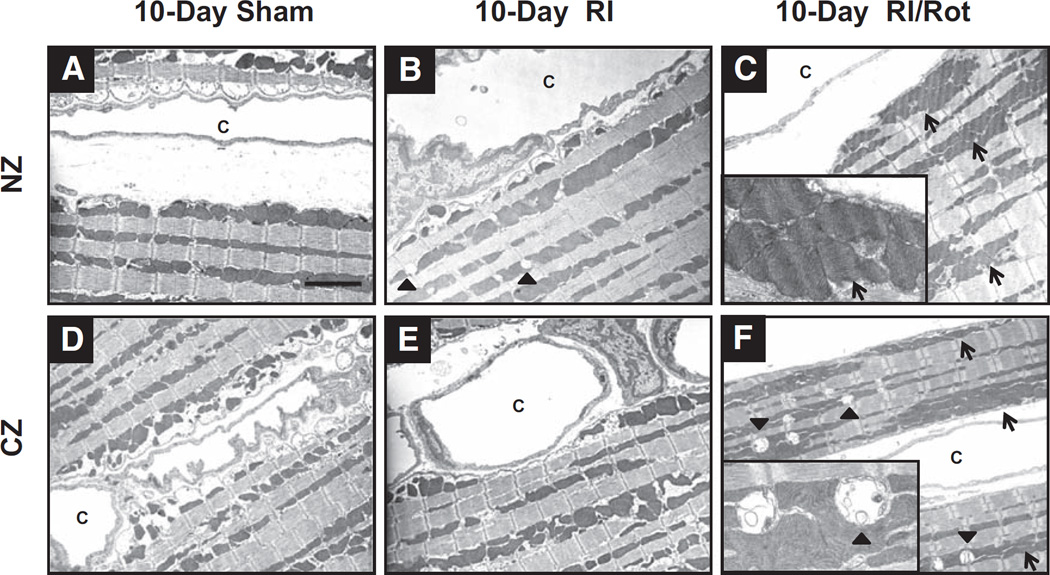Figure 2.
Mitochondrial oxidative stress and dysfunction induce mitochondrial aggregation and dyad swelling in the myocardium of lean rats in response to repetitive ischemia. Representative electron micrographs from 10-day sham (A, normal zone [NZ]; D, collateral-dependent zone [CZ]); 10-day RI (B, NZ; E, CZ); and 10-day repetitive ischemia (RI)/rotenone (Rot; C, NZ; F, CZ) rats, respectively (n=3 rats per group). Sham-operated rats showed well-preserved intracellular architectures (A and D). Rot induced mitochondrial aggregation (open arrow), indicating mitochondrial network fusion (C and F). This fusion process might be a mechanism for mitochondria to complement impair in function/bioenergetics for survival. It is also important to note that severe dyad swelling (solid arrow) was observed in Rot-treated rats, suggesting alteration in Ca2+ homeostasis in the myocardium (magnification, ×3000; insets, ×10 000). c indicates capillaries.

